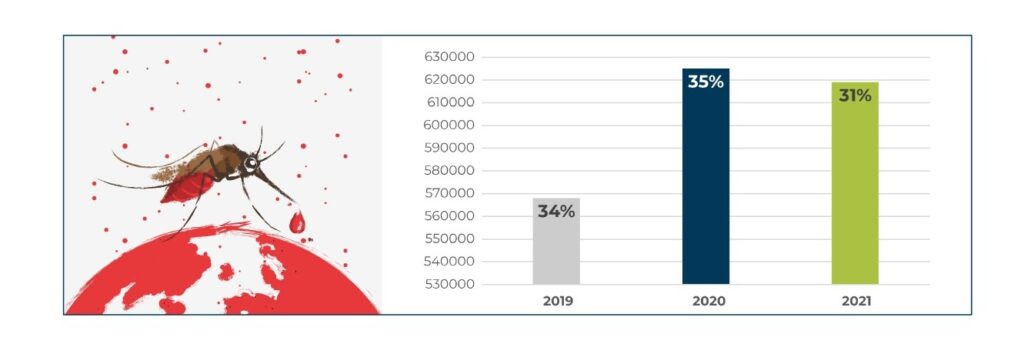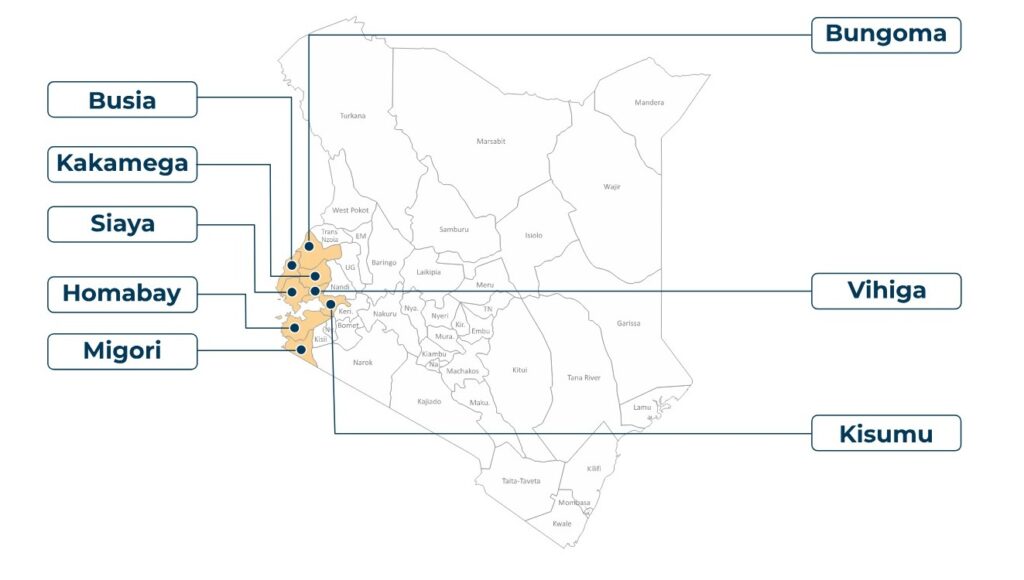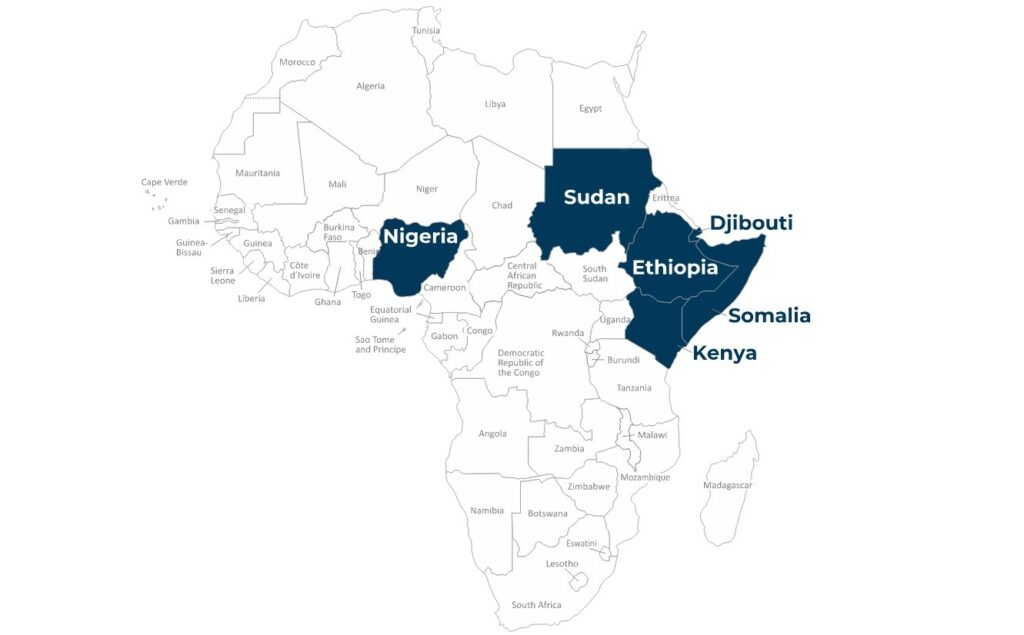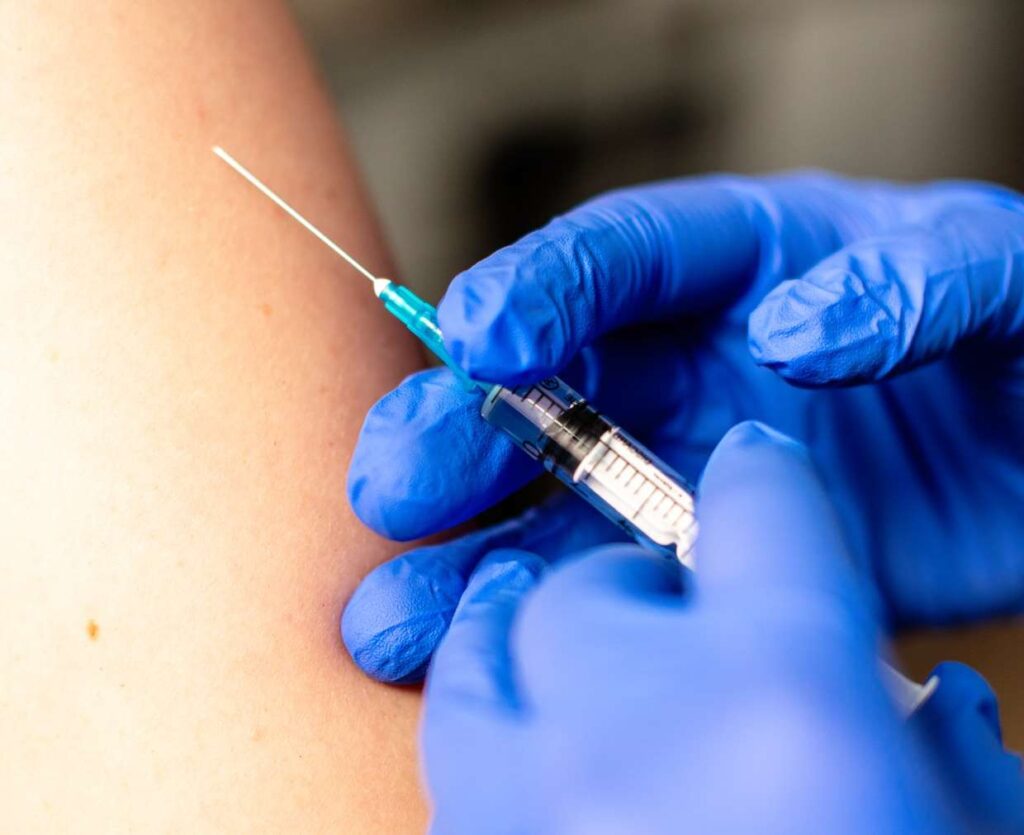Malaria is a disease caused by parasites that are transmitted to people through the bites of infected female Anopheles mosquitoes, as defined by the World Health Organisation (WHO). Over 95 percent of the malaria cases and 96 percent of deaths have been reported from the African region and the latest outbreak has been reported in Kenya due to the prevalence of new mosquito species ‘Anopheles stephensi’ that thrives in urban and rural areas.
Impacted Regions
Heatwaves cause both long-term and short-term impacts that affect business operations at tactical as well as strategic levels.
Malaria is reported in warmer regions of the world as higher temperatures promote the propagation of the causative agent. The species causing the latest outbreak was first discovered in Marsabit County and Vihiga, Busia, Bungoma, Kakamega, Siaya, Migori Homabay and Kisumu in Kenya have been reported to be the most affected regions. Dijibouti, Ethiopia, Sudan, Somalia, and Nigeria are other impacted regions. Initially reported in South Asia and parts of the Arabian Peninsula, ‘Anopheles stephensi’ is spreading further towards the Horn of Africa region.
Number of Worldwide Malaria Deaths

The vector can spread at a fast rate and can adapt to different climatic and environmental conditions. As per the World Malaria Report 2022, there have been about 619,000 malaria deaths worldwide in 2021, while 50.9 cases were reported per 1,00,000 people in Kenya in the year 2020. As per the reports by the Centers for Disease Control and Prevention (CDC), as of 2018, 3.5 million new clinical cases have been reported in Kenya and the World Health Organization reported 10,700 deaths each year with children accounting for 67 percent of the deaths across Kenya as of 2021. Overall 70 percent of the population is at risk of contracting the disease in the country, while an increase in cases is reported during rainy season due to spike in the breeding of mosquitoes, cases are also reported during dry season; while climate change has aggravated the number of cases reported.
Malaria Impacted Region In Kenya

Malaria Endemic Region in Africa

Causative Agent
Malaria is an illness caused by parasite ‘plasmodium’ which spread through the bite of infected female Anopheles mosquito vector. The other two species posing threat of the illness include P. falciparum and P. vivax. A new species ‘Anopheles stephensi’ has been discovered in Kenya. Anopheles Stephensi originated in Southeast Asia, West Asia and the Arabian Peninsula. The species has been expanding its geographic range over the last decade, with detections in Africa first reported in Djibouti (2012), Ethiopia and Sudan (2016), Somalia (2019), and Nigeria (2020).
Symptoms
The initial symptoms appear between 10 to 15 days after the infective mosquito bite.

If left untreated malaria can cause severe illness such as anaemia, dehydration, high acidity, impaired consciousness, low sugar level, accumulation of fluid in lungs, seizures, and organ failure of kidney, liver, spleen; and can be fatal. It can also spread by using unclean needles or unscreened infected blood transfusion and organ transplant.
Vulnerable Groups

Containing the spread

- The spread of the disease can be contained by effective vector control and application of preventive antimalarial drugs. Vector control help prevent the spread of infection by the use of insecticide treated nets and indoor residual spraying.
- Mass drug administration and vaccination coverage with RTS,S/AS01 (RTS,S) malaria vaccine could help prevent transmission of illness in children caused by P. falciparum. The National Vaccines and Immunisation Programme has been launched in Kenya to contain the spread, wherein the vaccine is administered in four phases in six, seven, nine and 24 months.
- Early diagnosis and treatment help reduce the severity of the disease and curtail transmission. The containment efforts are challenged by emerging resistance to insecticides and antimalarial drug resistance. Lack of surveillance and a surge in imported cases is another factor.
Recommendations
- Advised to wear long-sleeve clothing especially at night and keep windows and doors closed during evening through the night.
- Advised to consider cleaning up any stagnant water (including rainwater tanks and drain slumps) and water containers indoors and outdoors at the workspaces to contain the breeding of mosquitoes.
- Businesses can consider contingency measures such as remote working options in case the property location is vulnerable to the risk of spread.
- Businesses can ensure installing window screens, coils, insecticides and vapour dispensing machines to protect from mosquito bites. Adequate sanitation measures should be taken up at regular intervals at the workplace.
- Employees visiting public places or availing public transportation on a regular basis are advised to use EPA approved mosquito repellents to avoid the risk of infection. The recommended repellent contains 20-35 percent diethyl toluamide (DEET) or picaridin. Recommended pretravel doses of medications must be provided after contacting local healthcare services as a measure of precaution before travelling to impacted regions.
- Advised to carry out regular fumigation of insecticides containing pyrethrin at workspaces; and keeping the lawns mowed also help contain the breeding of mosquitoes.
- Advised to monitor the symptoms and contact local healthcare officials in case the symptoms persist.
- Advised to visit the official website of the Ministry of Health (https://www.health.go.ke/) for further details.


